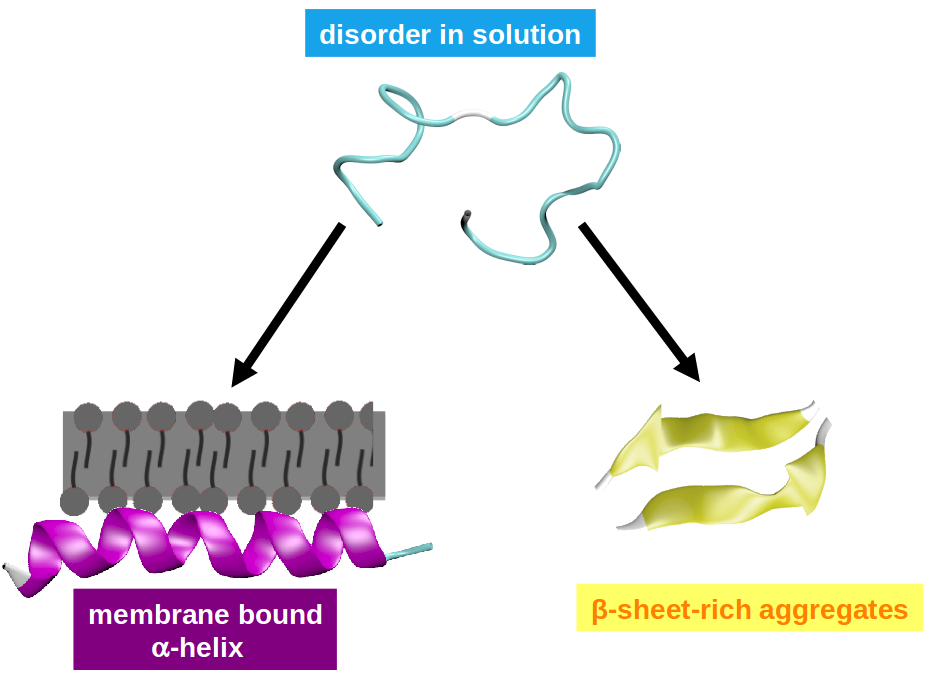Alpha Synuclein

α-synuclein is a 140 a.a. long, presynaptic protein, abundendly found in the human brain, and although its function remains unknown, it reportedly plays a role in neurotransmitter release and synaptic function. While determining function and native structure of α-synuclein poses a challenge interesting enough in itself, it is where things go wrong - malfunction and pathological structures - which really moved α-synuclein into the spotlight of current research. Growing evidence is suggesting a causative link between the misfolding and aggregation of α-synuclein and Parkinson's Desease (PD) and other Lewy body related, neurodegenerative disorders. The accumulation of α-synuclein into amyloid fibrillar aggregates as the primary structural component in so-called Lewy bodies is a hallmark of PD.
Two decades of research suggested the native state of α-synuclein to be a natively disordered, unfolded monomer. However, recent findings have been providing evidence for the existence of stable oligomers, in particular α-helical-rich tetramers The disorder-to-order transition of α-synuclein monomer into oligomers and finally into the pathological, β-sheet rich amyloid fibrils, is a highly complex process and yet to be fully understood. The existence of partially folded intermediates, which then facilitate fibrillation, is reported to be critical. While fibril elongation, given an amyloid nucleus is generally understood, the identity as well as the structural rearrangements leading to such key partially folded intermediate precursors remain opaque.
Hence, α-synuclein represents an excellent model system for studying the properties of disordered peptides as well as peptide aggregation, and resolving the molecular details governing α-synuclein structure and function might even prove to be essential for the understanding of its pathological role.
